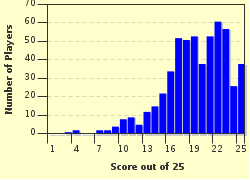Quiz Answer Key and Fun Facts
1. One of these is not an instruction to a musician. Which one?
2. The following four people are all composers, but which one lived in the twentieth century?
3. Which of these isn't a person?
4. Which one of these is not a composer?
5. Who is the composer hiding amongst the other musical words?
6. Which one of these is a musical instrument?
7. Which of the following is not a musical instrument?
8. One of the following is not a composer. Which one?
9. Which of the following is not a designation for a musical composition?
10. Which of the following is a musician rather than a musical instrument?
11. Who is best remembered for composing rather than conducting?
12. Which of these is not a musical instrument?
13. Which of these is not known as a composer?
14. Three of these are instruments - which one isn't?
15. Which of these is a musical instrument?
16. Which of these is not an instruction to a musician?
17. Three of these can be played - the other one can play as well as being played. Which is the odd one out?
18. Which of the following is only part of an instrument, not a whole instrument?
19. Who is known for conducting rather than composing?
20. Which of these isn't a brass instrument?
21. Who is the composer?
22. Which of the following is not a composer?
23. Which of these is better known for his conducting than for his compositions?
24. Four Chinese musical instruments, but which one isn't a wind instrument?
25. Only one question left, but still two letters to go, so Y & Z come together.
Of the following Chinese musical instruments, which one doesn't have strings?
Source: Author
Lottie1001
This quiz was reviewed by FunTrivia editor
ertrum before going online.
Any errors found in FunTrivia content are routinely corrected through our feedback system.

